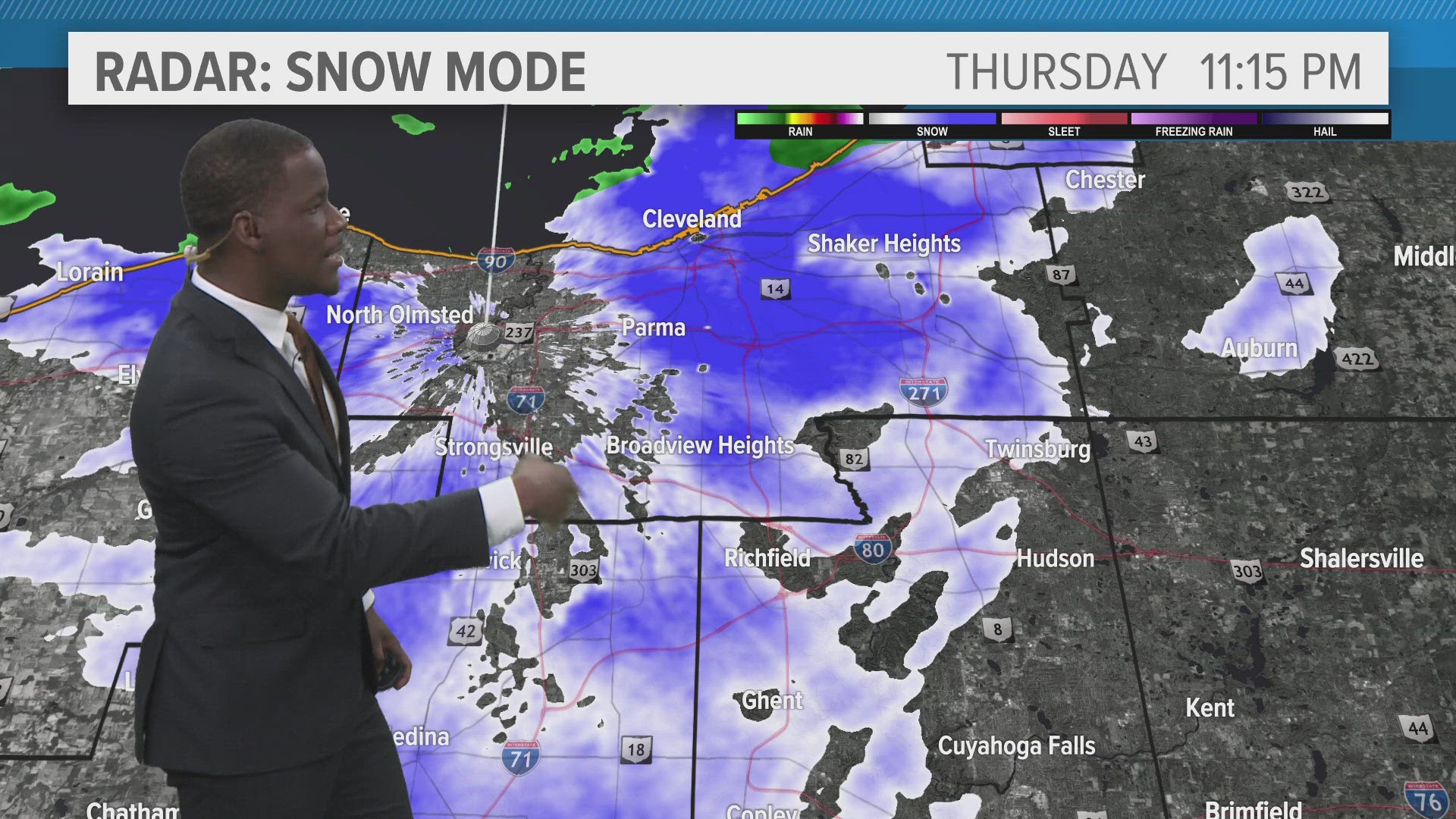CLEVELAND — 3News meteorologist Jason Frazer loves science and doing school visits. Recently, he kicked off an online series helping kids better understand meteorology. He’s going to be doing weather lessons about a variety of topics including wind, temperature, tornadoes and hurricanes. These lessons are geared to children who are 9 years old and older. He welcomes your questions. You can e-mail him directly at JFrazer@WKYC.com or you can contact him on Facebook or Instagram at @JasonFrazerTV.
In today’s lesson, Jason addresses what temperature is and how it impacts wind.
According to dictionary.com, temperature is defined as, “A measure of the warmth or coldness of an object or substance with reference to some standard value.”
In English that means we need to have an agreed upon way of establishing what temperature will represent a certain value.
There are three different scales we use to evaluate temperature: Fahrenheit, Celsius and Kelvin.
Scientist use the letter F to abbreviate Fahrenheit. It is mostly commonly used in the USA. The scale was developed by a German physicist named Daniel Fahrenheit. He established the freezing point for water was 32° and the boiling point for water is 212°.
A handout for the lesson can be found here:
Scientist use the letter C to abbreviate Celsius. The scale is mostly commonly outside of the USA across Canada, Europe, Asia, Africa and Australia. The scale was named after Anders Celsius, a Swedish astronomer. He established the freezing point for water was 0° and the boiling point for water is 100°.
In previous lessons, we established as you go higher in the sky, the temperature usually gets colder. However, sometimes it gets warmer. We call that a temperature inversion when you warmer air above colder air. That can have a big impact on the weather that we see like sleet or freezing rain.
Temperature can be impacted by wind. Often, you hear a meteorologist refer to this as the “real feel” or "wind Chill.” The chart created by the National Weather Service, and outlined in the video, is how we identify what the real feel temperature is.
A cool fact about the wind is the fastest wind gusts on earth was 254 mph. It happened during Tropical Cyclone Olivia near the Barrow Islands. That’s off the coast of Australia.
Wind speed can be impacted by several things including other storms, your location and temperature.
In the video, we also discuss how wind creates lake effect snow and the differences between a watch and warning.
If you have a question, please email Jason at JFrazer@WKYC.com.
RELATED: FORECAST | Extended 7-day outlook
RELATED: Jason Frazer's bio



